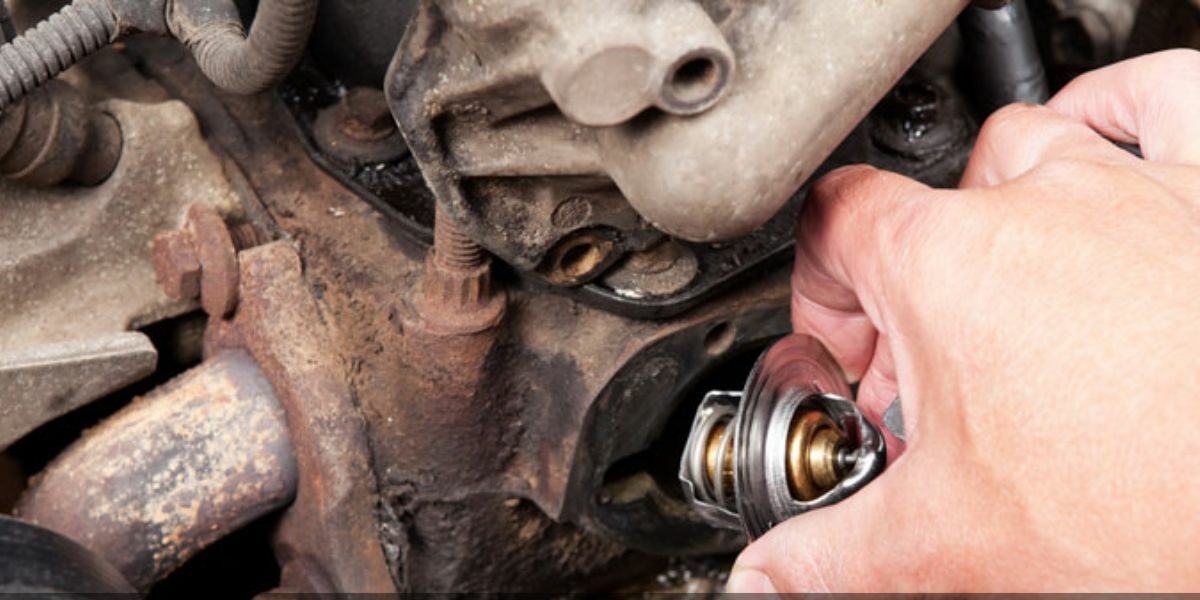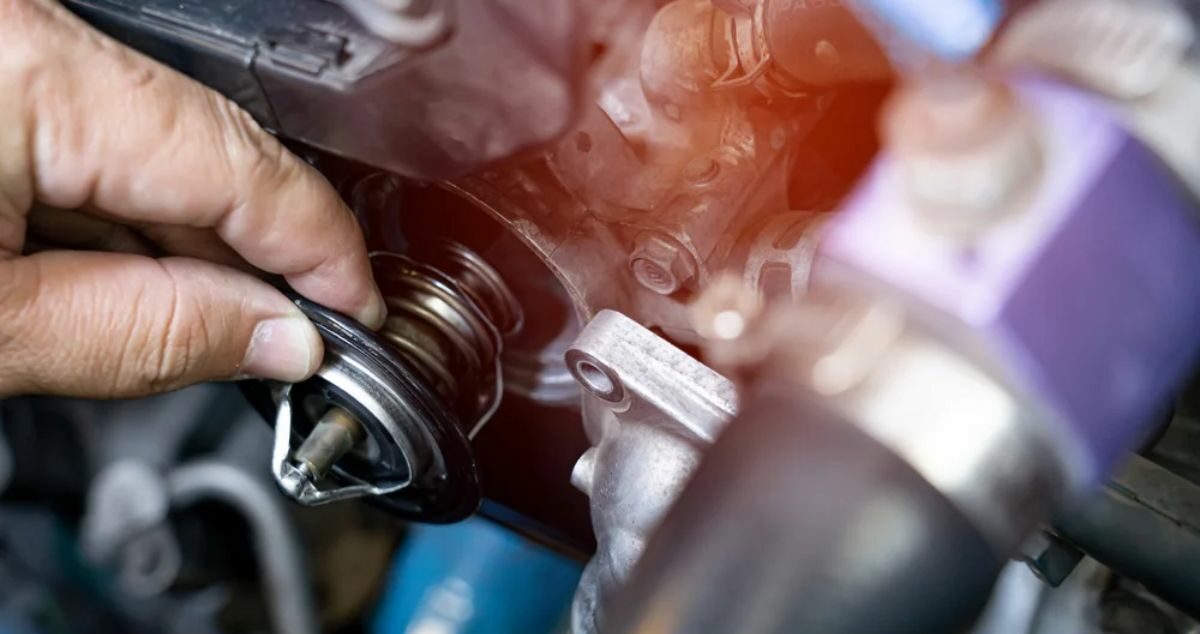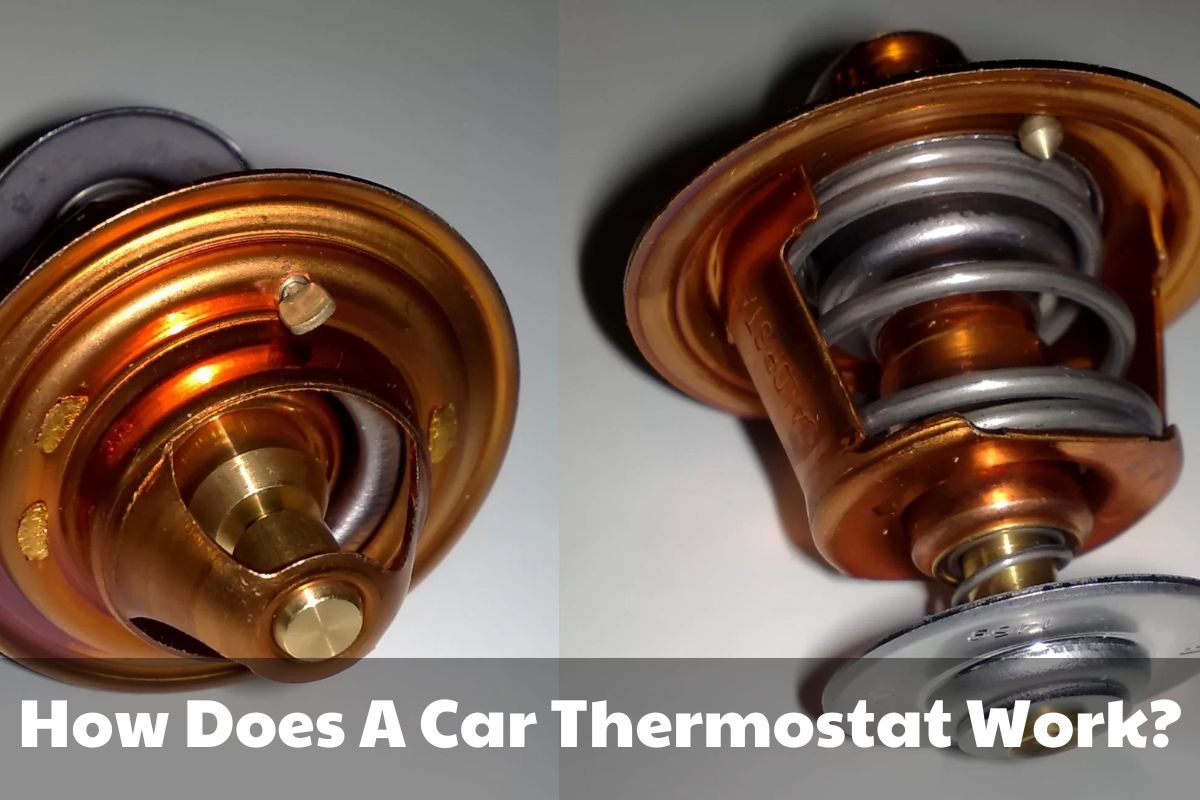Discussion Topic: How Does A Car Thermostat Work?
Every car has a small part called a thermostat, and it’s a big deal for keeping the car cool. Think of it like a traffic cop that directs the cooling liquid where to go between the engine and the radiator to make sure the car doesn’t get too hot. Even though it’s tiny, it does a crucial job in making sure your car runs smoothly and safely.
If your car is running hot, or making strange noises when you turn on the air conditioning, then it could be due to a malfunctioning thermostat. But before you take it in for repairs, it’s important to understand how does a car thermostat work and whether that fix would cost more than simply replacing the part itself.
Search terms: How does a car thermostat work diagram, How does a car thermostat work animation, what is the purpose of a thermostat in a car, car thermostat symptoms, function of, thermostat in cooling system, what is the function of thermostat, how does thermostat work with boiler, thermostat valve opening temperature
How Does A Car Thermostat Work
In every car that uses liquid to keep the engine cool, there’s a small but smart part known as the thermostat. Think of it like a traffic cop for the car’s cooling system, situated between the engine and the radiator. Its job is to manage how much coolant gets through to the radiator based on how hot the engine is.

When your car starts and its engine is still getting warm, the thermostat keeps the coolant from going to the radiator. This is because it’s best for the engine to get to its ideal temperature quickly. [source: Ofria].
After the engine reaches the right warmth (usually around 200°F or 95°C), the thermostat gets to work and opens up so that coolant can make its way to the radiator. This step is crucial for making sure your engine doesn’t get too hot.
The workings of the thermostat are pretty nifty. On the side of the thermostat that faces the engine, there’s a small cylinder filled with wax. This wax starts melting at around 180°F (each thermostat might have a different temperature at which this happens, but 180°F is common). Attached to the thermostat valve, there’s a rod that sits inside this wax. As the wax melts and expands, it pushes this rod out, causing the valve to open up.
If you’ve explored how thermometers work or have seen the experiment with a bottle and a straw, this concept might seem familiar. The expansion of this wax as it melts is a big deal because it changes from a solid to a liquid and also expands due to the heat, helping the valve to open at the right moment.
In short, the thermostat is a crucial component that makes sure your car’s engine operates at the best temperature by controlling coolant flow in a very smart way.
The importance of a thermostat
Why It’s Important to Have a Good Thermostat in Your Car:
- Keeps Your Car Running Smoothly: A thermostat helps keep your car’s engine at just the right temperature. [source: Hawley]. When the engine is at its happy temperature, it runs better and might even use less gas.
- Helps the Environment: When your car’s engine is running like it should, it’s not just good for your car; it’s also better for the air we all breathe. That’s because a well-running engine puts out fewer bad gases.
- Stops Your Engine from Getting Too Hot: If an engine gets too hot, it can break. That’s bad news and can be expensive to fix. The thermostat stops that from happening by making sure cool stuff (like water) can move around the engine when it needs to cool down.
- Makes Your Car Last Longer: When your engine doesn’t get too cold or too hot, it means all the parts of your car can work properly for longer. This means you won’t have to spend as much money fixing or replacing things in your car over time.
Basically, a thermostat does a lot more than control temperature. It keeps your car running well, saves you money, and even helps the planet a bit.
Understanding Thermostat Issues: What You Need to Know
Signs Your Thermostat Might Be Having Trouble:
- Coolant Leaks: If you see liquid pooling under your car, it could be a sign.
- Temperature Swings: If your car’s temperature gauge is more unpredictable than the weather forecast, it might mean there’s an issue. Sometimes, this can also mean there’s a small air pocket in the cooling system that needs to be removed.
- Check Engine Light: If this light pops up on your dashboard and the mechanic tells you it’s a code like P0128 or P0125, it’s likely related to your thermostat.
- Too Hot or Too Cold: If your car seems to be overheating or not warming up properly, it’s a clue something might be wrong.
- Chilly Cabins: Finding it hard to stay warm inside your car? This could be another hint.
- Engine Issues: If your car isn’t running smoothly or you notice it’s not as quick to respond as usual, the thermostat could be to blame.
Good news is, thermostats aren’t too pricey—usually about $10 to $15 for the part alone. Prices go up if your car has the type that’s built into a larger part. It’s generally a good idea to get a new thermostat if you’re seeing signs of trouble or if you’re getting the water pump replaced anyway. It saves you time and money in the long run.

Looking to swap out your thermostat? We’ve got a guide that can make it easier.
Ever run into thermostat troubles yourself? Drop us a comment and share your experience.



I’m Timothy Ballard, owner of a used car dealership in Springfield. I love just about everything automotive, but I have a special place in my heart for trucks. I’m an ASE Certified Master Technician, so I know my way around a car. In my spare time, I enjoy traveling with my family and hiking new trails.

The car thermostat utilizes a sealed chamber that houses a wax pellet. At a pre-set temperature, this pellet melts and expands, initiating the movement of a rod. When the operating temperature is surpassed, the rod opens a valve. The specific operating temperature is determined by the composition of the wax. As the temperature fluctuates, the thermostat adjusts its opening accordingly, facilitating a balanced flow of coolant recirculation and coolant flow to the radiator. This dynamic process effectively maintains the engine temperature within the optimal range.